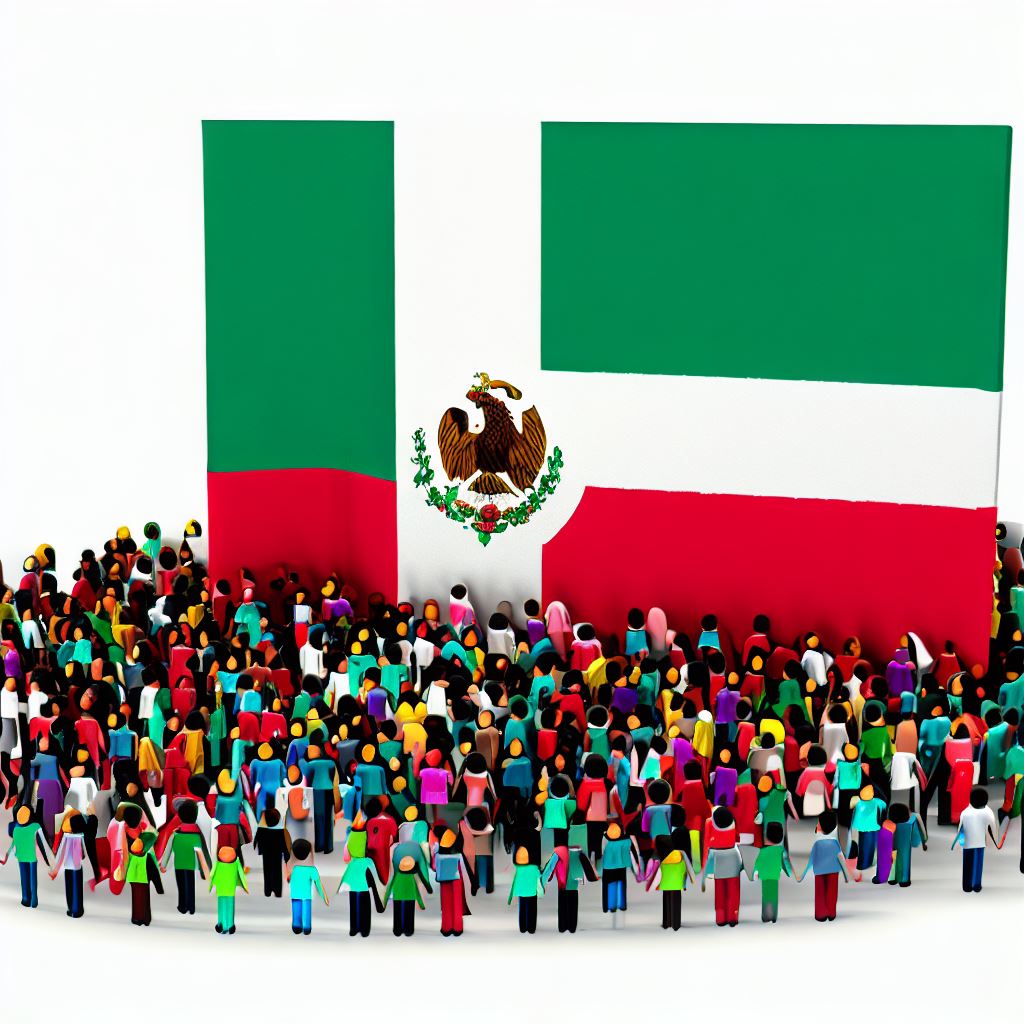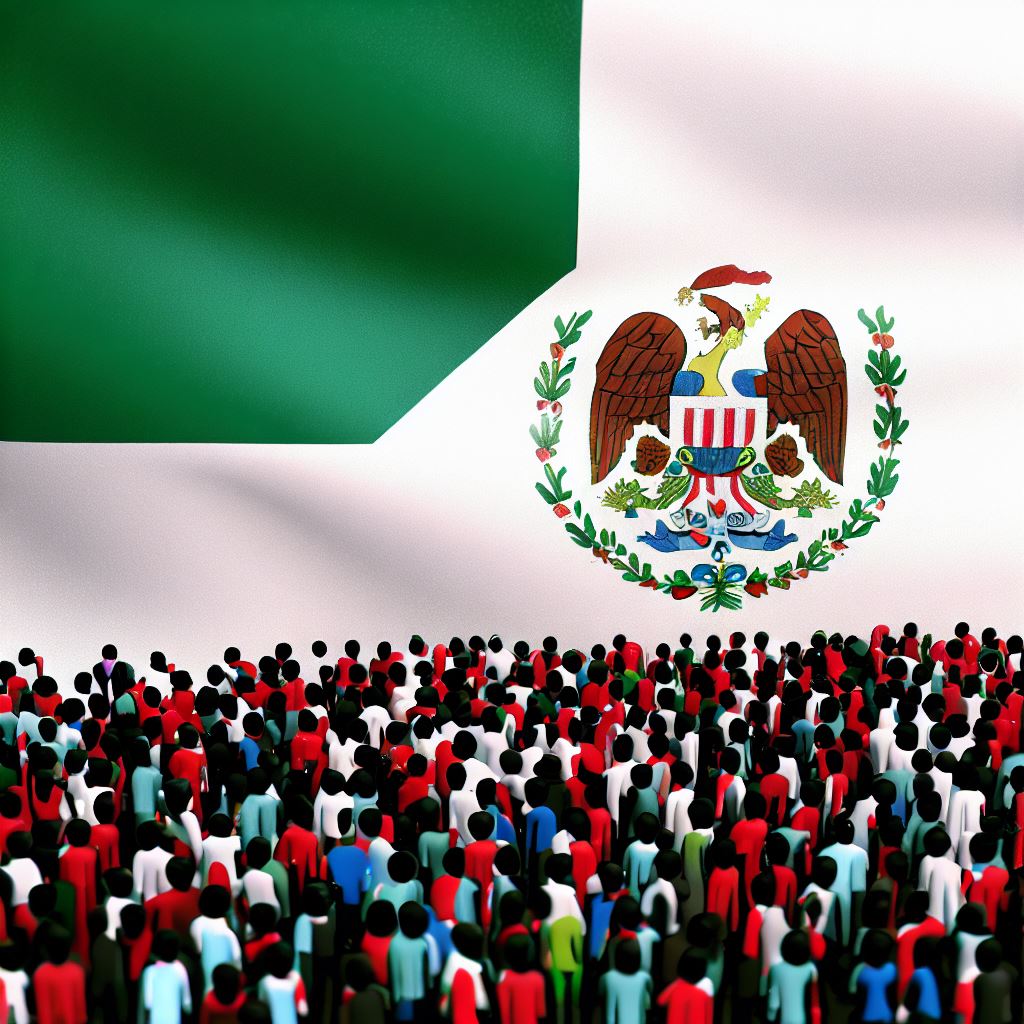Mexico Population 2024: Trends, Growth, and Projections
Mexico, known for its vibrant culture, rich history, and stunning landscapes, is not only a tourist hotspot but also a country with a dynamic demographic landscape. As we approach 2024, it’s worth taking a closer look at Mexico’s population, its growth rate, and what the future holds.
Thank you for reading this post, don't forget to subscribe!
The Current Population
As of September 15, 2023, Mexico’s population stands at approximately 128,649,115 people, according to Worldometer elaboration of the latest United Nations data[^1^]. This number makes Mexico one of the most populous countries in the world, ranking 11th globally[^1^].

Population Growth Rate
Mexico has experienced consistent population growth over the years. In 2022, the population increased by 0.75% compared to the previous year[^2^]. This growth rate, while moderate, highlights the nation’s expanding demographic landscape.
Projections for 2024
Looking ahead to 2024, projections indicate that Mexico’s population will continue to rise. According to Trading Economics, econometric models estimate that Mexico’s population will reach approximately 126.80 million in 2024[^3^]. Statista also predicts a population of 132.31 million for 2024[^4^]. These variations in estimates may be attributed to different data sources and methodologies.
Factors Influencing Population Growth
Several factors contribute to Mexico’s population growth. These include:
1. Fertility Rate: Mexico has a moderate fertility rate of 2.4 children per woman[^5^]. While this rate is lower than in the past, it remains a key driver of population growth.
2. Improved Healthcare: Advances in healthcare have led to lower mortality rates and increased life expectancy, contributing to population growth.
3. Urbanization: Mexico has a high rate of urbanization, with a significant portion of the population residing in cities. Urban areas tend to have higher birth rates.
4. Economic Opportunities: Migration from rural to urban areas and, in some cases, emigration to other countries in search of economic opportunities also influence population dynamics.
5. Immigration: Mexico receives immigrants from neighboring countries and beyond, further contributing to its population diversity.
Mexico City’s Population
Mexico City, the capital and largest city in Mexico, is a bustling metropolis known for its cultural heritage and economic significance. In 2023, its population is estimated to be over 20 million[^6^]. The city’s growth reflects its role as a major economic and cultural hub in the region.
Population Density
Mexico’s population density varies across the country. Urban areas like Mexico City are densely populated, while rural regions have lower population densities. Factors such as employment opportunities and infrastructure development often drive population concentration in urban centers.
Future Challenges and Opportunities
As Mexico’s population continues to grow, the country faces both challenges and opportunities. Managing urbanization, ensuring access to healthcare and education, and addressing economic disparities are crucial for sustainable development. Additionally, Mexico’s demographic diversity offers cultural richness and a skilled workforce, which can drive economic growth.
Currency in Mexico
While the population of Mexico is a critical aspect of the country’s identity, it’s also essential to touch on practical matters. The official currency used in Mexico is the Mexican Peso (MXN). Understanding the currency is essential for travelers and businesses operating in Mexico.
In conclusion, Mexico’s population in 2024 is poised to reach new heights, reflecting the nation’s ongoing demographic evolution. With careful planning and strategic policies, Mexico can harness the potential of its growing population to drive economic and social progress while addressing the challenges that come with it. As the country continues to evolve, its dynamic culture and heritage remain a source of pride and inspiration for both its residents and visitors.
F.A.Q. – Mexico Population in 2024
Question 1. What is the projected population of Mexico in 2024?
A.: According to econometric models, the Mexico Population is expected to be around 126.80 Million in 2024.
Question 2. How has Mexico’s population been trending in recent years?
A.: Mexico’s population has been steadily increasing, with a projected population of 126.80 Million in 2024, according to economic models.
Question 3. Can you provide historical data for Mexico’s population?
A.: Over the years, Mexico’s population has shown consistent growth. In 2023, it was approximately 128.65 Million, representing a 0.75% increase from 2022.
Question 4. What are the long-term population projections for Mexico?
A.: Mexico’s population is expected to continue growing, with projections indicating a population of 134,074,375 in 2024.
Question 5. How does Mexico’s population growth compare to other countries?
A.: Mexico is among the countries with significant population growth. It’s important to note that population projections play a vital role in understanding demographic trends.
Mexico’s population is on a steady upward trajectory, and understanding these trends can be crucial for various sectors such as healthcare, education, and urban planning. If you have more specific questions or need detailed information about Mexico’s population or related topics, feel free to ask!

